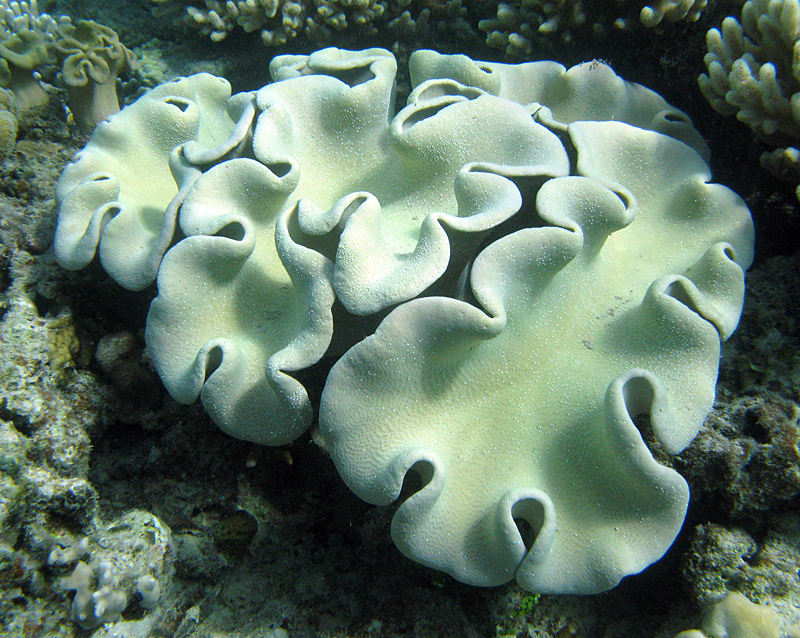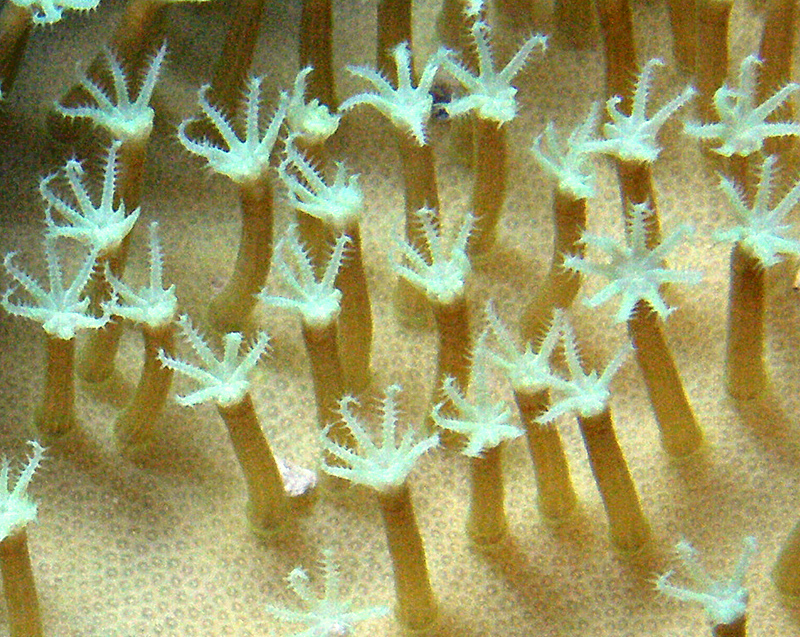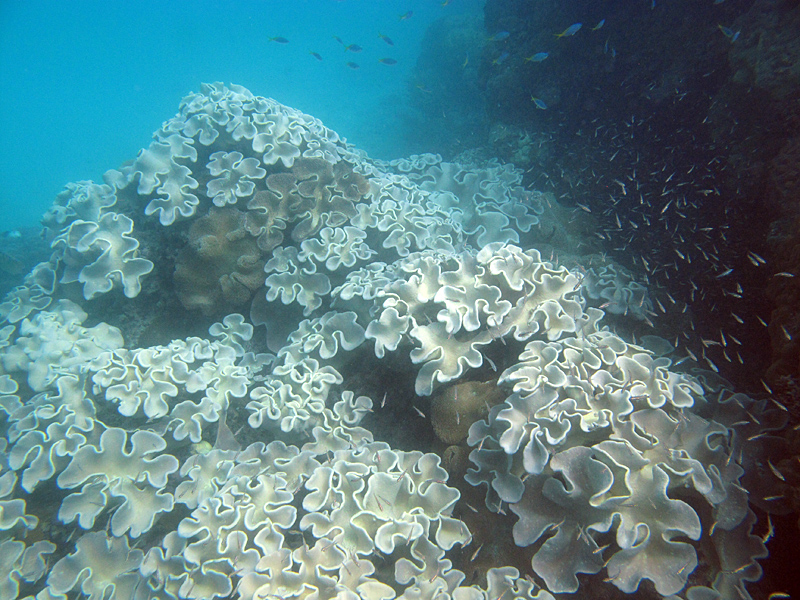
©Andy: A colony Sarcophyton sp. at Watson's Bay showing the typical morphology with polyps retracted

©Andy: Macro image of the colony surface of Sarcophyton , showing extended autozooids dispersed between smaller siphonozooids
Distinguishing features
A soft coral with a distinct bare stalk and a large, smooth upper surface (polypary) with distinct convoluted edges. There are two types of polyps; the longer autozooids which are extensible, and the smaller siphonozooids which stay flush with the colony surface. The colonies have a distinct "hairy" appearance when auotozooids are extended. Colonies may be up to 1.5m in diameter, however they can form large monospecific stands of multiple colonies that can be up to 7 meters across.
The genera Sarcophyton and Lobophytum are in need of revision. Recent molecular analysis of 92 specimens from the Indo-Pacific showed 19 species of Lobophytum and 16 species of Sarcophyton. "Phylogenetic analysis showed three distinct clades. One clade included only morphologically typical Sarcophyton species with a stalk distinct from the polypary, poorly formed club-shaped sclerites in the colony surface, and large spindles in the interior of the stalk. A second clade included only morphologically typical Lobophytum colonies with lobes and ridges on the colony surface, poorly formed clubs in the colony surface, and interior sclerites consisting of oval forms with regular girdles of ornamental warts. The third distinct clade included a mix of Sarcophyton and Lobophytum nominal species with intermediate morphologies. Most of the species in this mixed clade had a polypary that was not distinct from the stalk, and the sclerites in the colony surface were clubs with well-defined heads. Within the Sarcophyton clade, specimens identified as Sarcophyton glaucum belonged to six very distinct genetic sub-clades, suggesting that this morphologically heterogeneous species is actually a "cryptic species complex" (See McFadden et. al (2006)).
Size
- Size data has not been obtained.
Synonyms
Distribution and habitat preferences
Sheltered back reef and lagoonal habitats.
Can be found in most reef habitats around Lizard Island.
Behaviour
Sarcophyton is well known for its high concentrations of toxic organic compounds including terpenes and cembranes, which deter predators and also inhibit settlement and competition from other benthic organisms. The egg cowrie (Ovula ovum) and several butterflyfish species (Chaetodon melannotus) are known to feed on this coral however.
The coral can reproduce in a number of ways, including fragmentation, polyp brooding and external spawning. At Lizard Island, the species is gonochoric, with separate male and female colonies in approximately equal numbers. Broadcast spawning takes place after the full moon in November during the reef-wide mass spawning event, however small numbers of gametes are also released after full moons from August to February.
Growth is slow, about 5mm per year, and large stands over 10m could well be more than a century old.
Web resources
References
- Devine, B.M., P.L. Munday and G.P. Jones (2011). Rising CO2 concentrations affect settlement behaviour of larval damselfishes. Coral Reefs, doi: 10.1007/s00338-011-0837-0. LIRS catalog number 1460.
- Fabricius, K.E. (1995). Slow population turnover in the soft coral genera Sinularia and Sarcophyton on mid- and outer-shelf reefs of the Great Barrier Reef, Marine Ecology Progress Series, 126: 145-152.
- Fabricius, K. and P. Alderslade (2001). in: Soft corals and sea fans: a comprehensive guide to the tropical shallow water genera of the central-west Pacific, the Indian Ocean and the Red Sea. Australian Institute of Marine Science, Townsville.
- View all references






